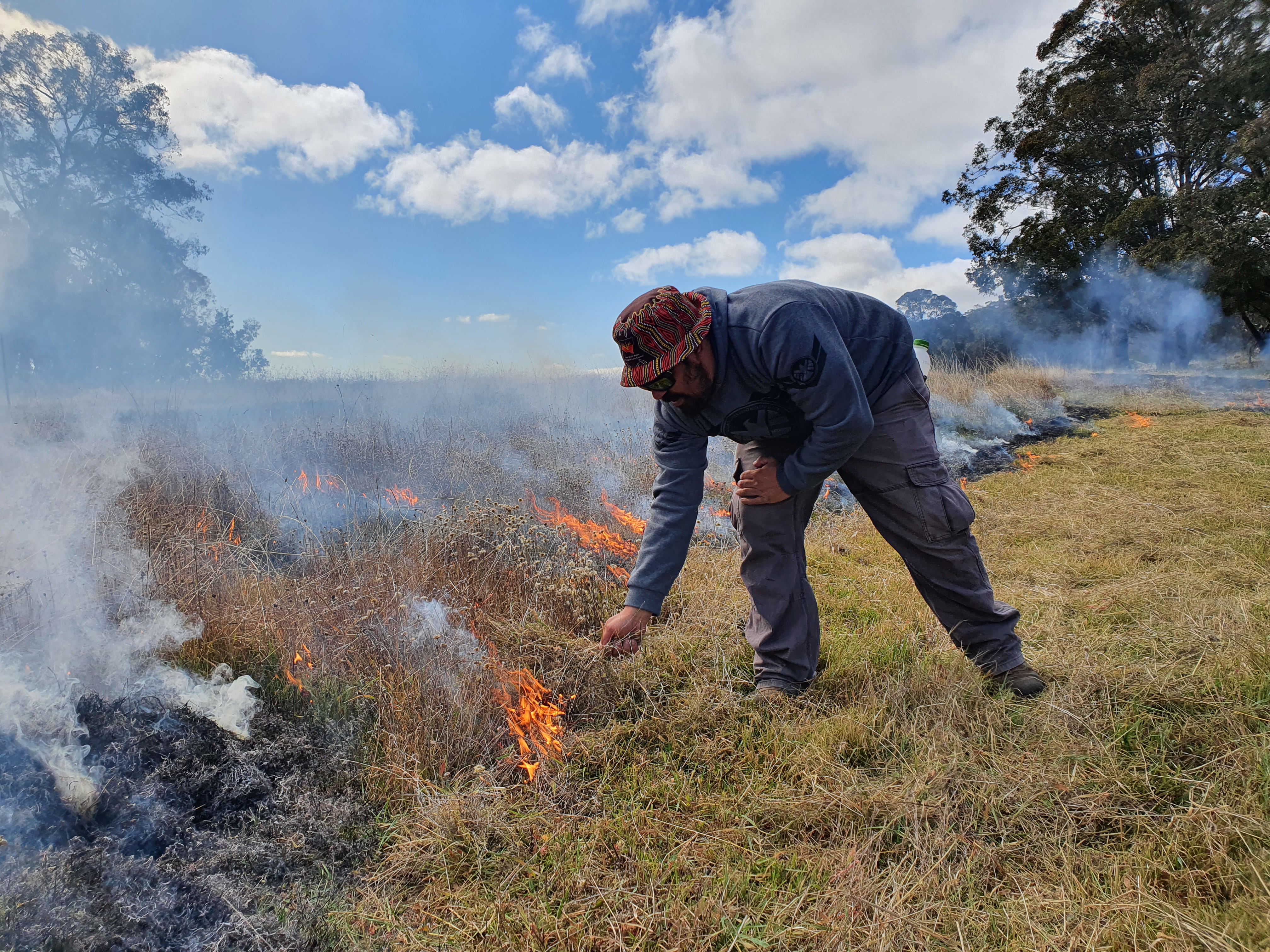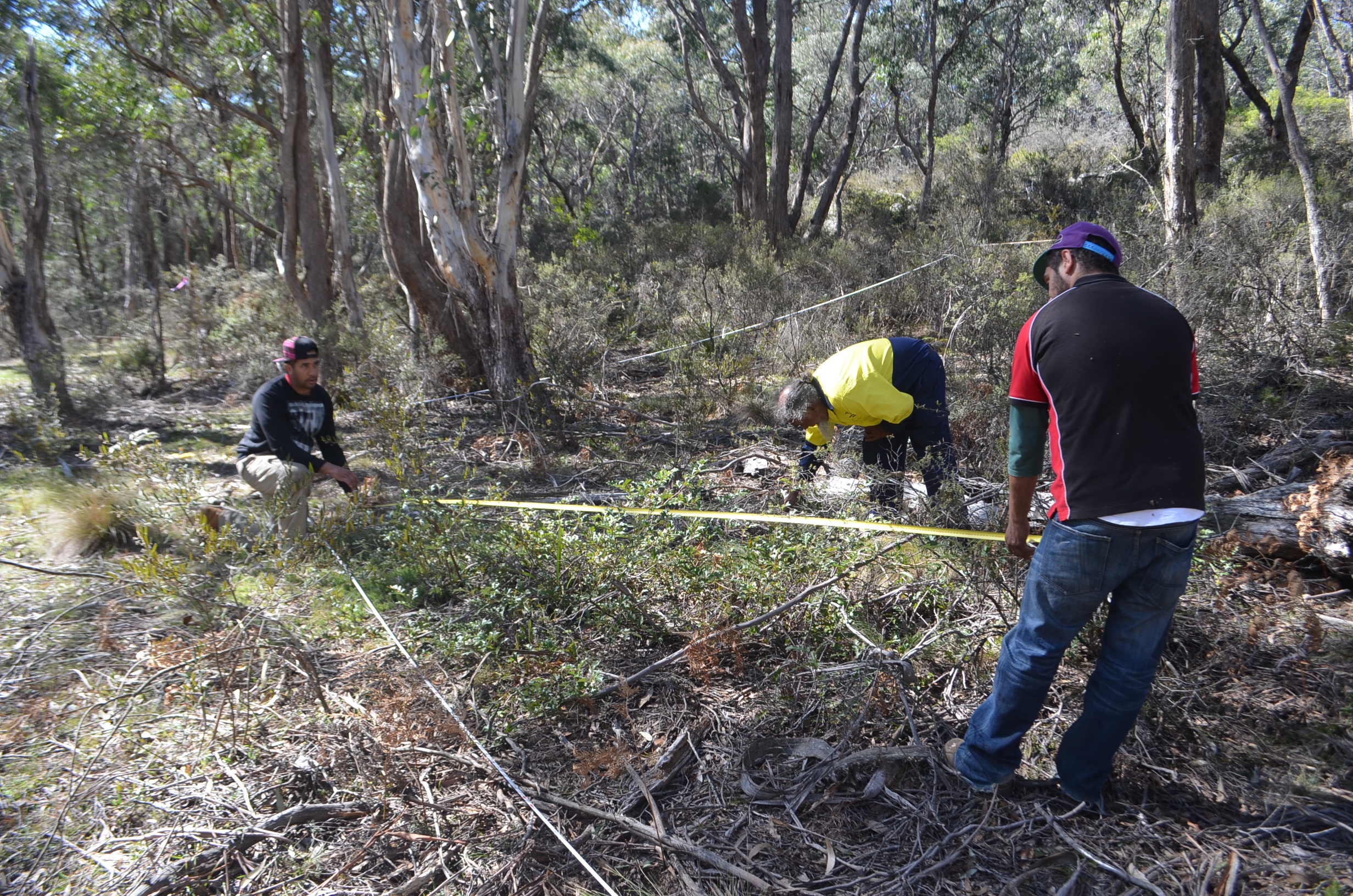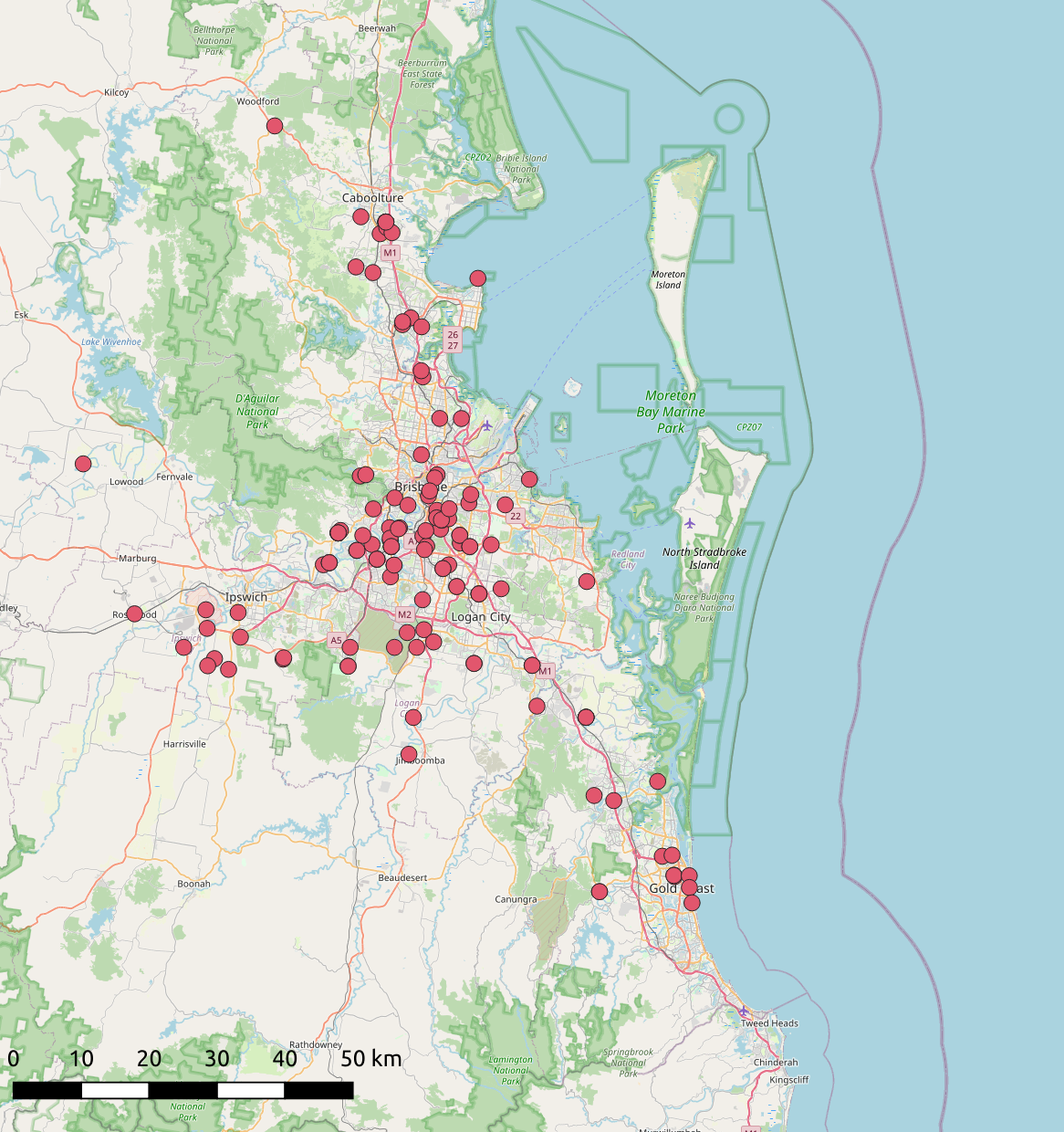Andy Baker, Tasmin-Lara Dilworth and Oliver Costello
The importance of the Gondwana Rainforests of Australia World Heritage Area
The 2019–20 Black Summer bushfires affected 24 of the 50 reserves in the Gondwana Rainforests of Australia World Heritage Area (GRWHA), sparking major concerns for their globally significant rainforest values (DAWE 2020d, Nolan et al. 2020). Together, these reserves protect the largest stands of remnant rainforest in subtropical eastern Australia, and support a high diversity of endemic and threatened rainforest biota (DAWE 2020d). Despite its name, rainforests in the GRWHA typically occur as discontinuous patches within a matrix of fire-dependent eucalypt forest. These eucalypt forests are also recognised as significant integral values of the GRWHA because of their evolutionary and ecological interrelationships with rainforest, and their inherent deep antiquity and threatened species habitat values (Bradstock 2016). The GRWHA is also a significant cultural landscape for many Aboriginal groups with connections to the cultural and natural values present, including the values of grassy and open forests as traditional pathways that connect people and significant places (Mcintyre-Tamwoy 2008).
Assessing the negative and positive impacts of the 2019–20 bushfires
Preliminary mapping suggested that approximately 50% of the GRWHA was affected by the 2019–20 bushfires (DAWE 2020d, Nolan et al. 2020). However, further ground truthing indicated that the extent of fire-affected rainforest is less than first anticipated (DAWE 2020d). For example, on-ground validation of fire boundaries in the Nightcap Range reserves (see Figure 18) found that fires were largely restricted to forests with fire-dependent eucalyptus and brushbox in the canopy, and that fires typically self-extinguished within 30 metres beyond boundaries with core rainforest (DPIE 2021). Despite this, rainforest biota was extensively affected where fires burned the rainforest understorey beneath sclerophyll canopy.
Assessments and monitoring indicate a remarkably high resilience and recovery of subtropical, littoral, dry and warm temperate rainforest. Assessment of postfire response across 8 GRWHA reserves found that around two-thirds of woody rainforest plant taxa were either strong resprouters or postfire seeders (Nicholson et al. 2020). Similar rates have been found in other postfire studies of Australian rainforests (e.g. Marrinan et al. 2005, Campbell & Clarke 2006, Williams et al. 2012), further demonstrating the high resilience of rainforest to occasional fire (Bowman 2000). Several threatened species are showing signs of recovery, including the rufous scrub-bird (Atrichornis rufescens), stuttering barred frog (Mixophyes balbus) and red bopple nut (Hicksbeachia pinnatifolia) (DAWE 2021). Despite strong indicators of resilience, the recovery of some taxa remains uncertain due to restricted distribution (e.g. nightcap oak – Eidothea hardeniana) or confounding impacts such as myrtle rust (e.g. peach myrtle – Uromyrtus australis) (Kooyman 2020). Overall, these early results suggest a strong potential for long-term recovery. Previous postfire studies of Australian rainforest show that rainforest structure can regenerate quickly after fire. For example, Williams et al. (2012) found that rainforest trees resprouting from ground level returned to pre-fire heights (4–8 metres) within 3 years.
Most of the sclerophyll forests affected by the 2019–20 bushfires in the Nightcap Range reserves were chronically overdue for fire (Baker & Catterall 2015, Bradstock 2016, NPWS 2018), and these fires are likely to have been largely beneficial in these ecosystems, triggering widespread reproduction of open forest flora and restoring early successional habitat (e.g. Whelan 1995, Chapman & Harrington 1997, Kelly et al. 2017). In the absence of fire, dry sclerophyll forests in the region are vulnerable to rainforest pioneer and exotic weed invasion (Lewis et al. 2012, Tasker et al. 2017, Baker et al. 2020a), and the subsequent elimination of open-forest flora and fauna (Baker et al. 2020a, Baker et al. 2020b). For wet sclerophyll forests with an inherent rainforest understorey, rare wildfires are also believed to be a crucial part of the natural regeneration cycle (Keith 2004, Kenny et al. 2004).
Predicting climate change effects on fire regimes in the Gondwana Rainforests of Australia World Heritage Area
Fires in the Nightcap Range rainforest are not unprecedented, with charcoal evidence of pre-European fires in subtropical rainforest every 300–1,000 years (Turner 1984), and modern intervals of less than 50 years in warm temperate rainforest (Floyd 1990). However, the effects of climate change on fire regimes in the GRHWHA are uncertain because of the many synergistic and antagonistic effects driving climate–fire–vegetation feedbacks (Bradstock 2010, Keeley & Syphard 2016).
Under normal climatic conditions, rainforest fuel structure and microclimate typically suppress fires at their boundary (Hoffmann et al. 2012, Little et al. 2012). However, this effect is likely to be muted under the hotter and drier conditions predicted across many parts of eastern Australia (Collins et al. 2019), leading to more frequent fire incursions into rainforest. Conversely, elevated atmospheric carbon dioxide (CO2) accelerates rainforest expansion into open forests, leading to the suppression of understorey fuels and a more sheltered microclimate, potentially facilitating rainforest expansion even with increased fire frequency (Bowman et al. 2010, Wigley et al. 2010). Indeed, the dominance of closed forest in past CO2-enriched climates (McElwain 2018) suggests that increasing temperature and seasonal drought can be overridden by the fire suppression feedbacks associated with rainforest fuel arrays (Girardin et al. 2013, Bond 2019).
Understanding the benefits of healthy fire regimes in the Gondwana Rainforests of Australia World Heritage Area
Maintenance of both rainforest and sclerophyll forest values are explicit objectives for the management of the GRWHA (Bradstock 2016). The restoration of appropriate fire regimes in fire-dependent ecosystems adjoining rainforest areas holds promise for maintaining both rainforest and sclerophyll forest values in an increasingly changing climate. First, research elsewhere indicates that planned burns in sclerophyll communities can mitigate the spread of unplanned fires into adjacent rainforest (King et al. 2008, Bradstock 2016), primarily by reducing the intensity, rate of spread and extent of fires approaching rainforest boundaries. Second, the long-unburnt status of many sclerophyll communities in the GRWHA and their vulnerability to degradation from rainforest pioneer invasion warrant the restoration of traditional fire regimes to maintain open forest structure and composition (Bradstock 2016). Additionally, planned burns have been shown to reduce wildfire severity within sclerophyll forests (Hislop et al. 2020), while cultural burning can effectively protect fire-sensitive refugia (McKemey et al. 2020).
Ultimately, the extent and severity of bushfires in modern Australia are linked to the demise of Aboriginal landscape fire and exacerbated by climate change (Bowman 1998, Bird et al. 2008). The restoration of historical fire regimes through cultural burning practices can play a key role in the recovery and ongoing protection of GRWHA values (Bradstock 2016), including the restoration of biodiversity, cultural pathways and connection to Country.


















